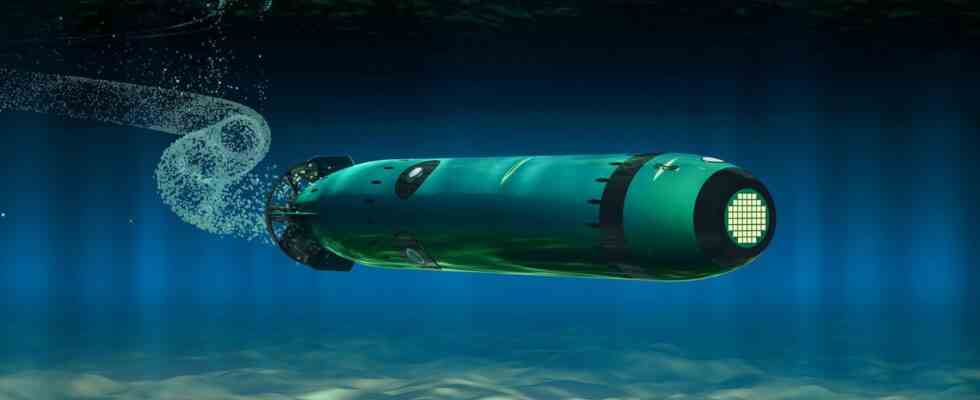upgrade
China develops supersonic missile torpedo with boron fuel
Rendering of a torpedo (icon image)
©Getty Images
First fly, then dive, and both at high speed: Beijing’s super torpedo is designed to break through the US Navy’s defenses.
Torpedoes are difficult to detect and intercept. However, the range and speed of these weapons are short. China is now working on a mixture of rocket and torpedo, which is not new either – but China’s super torpedo is said to achieve unprecedented speeds.
The South China Morning Post (SCMP) reports that the design of a supersonic rocket was published in the magazine “Solid Rocket Technology”. The rocket is about five meters long. First, it takes off and climbs to an altitude of 10,000 meters, where it reaches 2.5 times the speed of sound. After up to 200 kilometers, it transitions to the actual target approach. It sinks over a distance of 20 kilometers to a height just above the waves, making it almost impossible to detect and intercept it. 10 kilometers from the finish, it begins to submerge like a torpedo.
High underwater speed
The special thing about it is the speed. The weapon is said to be able to reach 200 knots underwater, which is more than 350 kilometers per hour, and dive up to 100 meters deep. This is possible because the torpedo moves in a protective air bubble. As soon as a boat or a torpedo is surrounded by a protective atmosphere, the water resistance drops dramatically and very high speeds are possible. The weapon should be able to change direction during the entire “approach”. The developers are convinced that no system will be able to intercept their missile torpedo in the foreseeable future.
The weapon is powered by a fuel containing boron. The element reacts strongly with air and water. Presumably, the atmosphere should also be fed from the reaction of the material. Experiments with boron as a fuel had previously been carried out, but the attempts were abandoned again because the reactions of the element are difficult to control and residues were deposited in the engine. The fuel was only rediscovered for today’s hypersonic weapons. A problematic element for China, since it has to be imported from abroad.



